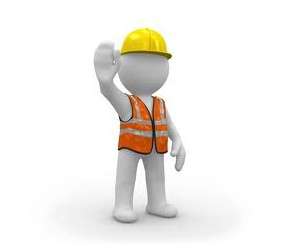Safety procedures in the workplace are essential to achieve compliance according to the Health and Safety Act. These procedures are written down guidelines for procedures and tasks involving recognized hazards. A health and safety consultant can assist in drafting these procedures.
A health and safety procedure sets out the steps to be followed for work activities. When developing these procedures a health and safety consultant will consider the following:
- Resolving work health and safety issues
- Consulting with workers on work health and safety
- Monitoring workers' health and workplace conditions
- Providing information and training.
Safety procedures can be developed for the entire workplace or for specific aspects where hazards have been identified. The bottom line is that they strive to ensure the workplace is health and safety compliant. Below are a few examples of procedures one can come across.
Emergency procedures
Emergency procedures are one of those safety procedures in the workplace of which adherence to the procedure is simply non-negotiable. They have to be observed by every employee and all users of a workplace. These safety procedures provide guidelines on what to do and how to do it in case of an emergency. Possible emergencies include fire, explosion or chemical spills. Emergency safety procedures in the workplace are usually complimented by Evacuation Floor Plans which are tried and tested for effectiveness through evacuation emergency drills. Some workplaces have unique fire emergency procedures. These procedures will put specific emphasis on the steps to follow in case of a fire.
Electricity safety procedures
Most workplaces cannot do without electricity but it must be handled with much care. Electrical safety procedures are essential for a workplace to remain health and safety compliant. They will help improve safety, encourage proper use of electricity and to also highlight the dangers of electricity. These safety procedures are applicable to most workplace and to all employees in the workplace.
Safe operating procedures for machinery
Due to the complexity of most working activities, machinery is now used to ease the burden of labour. However, machinery can also be dangerous if not properly used. That is where safe machinery operating procedures come into effect. Machinery operating procedures are usually provided by the manufacturer. This shouldn't stop workplaces to draft their own guidelines which can be displayed next to all machinery to hype safe use. Drafting such guidelines requires extensive knowledge about the legislation as well as how machinery operates. Health and safety consultants are, often, in the best position to draft these standards as they are familiar with the latest trends and requirements.
Working at heights safety procedures
Working for heights safety procedures come in handy for all workplaces that have working activities that are conducted from a height. Working at heights safety procedures are guidelines on steps to follow and what to look out for before commencing work at a height. Some specific safety procedures for working at heights can be ladder safety procedures. These would look at the kind of ladder, what it is made of, what steps to take to ensure the ladder is safe to use or how to identify a defect ladder.
The above are just a few examples of procedures that must be in place in most workplaces. Health and safety consultants like MAKROSAFE assist companies every day drafting such procedures. Do you want to achieve compliance in the workplace? Contact us today!





Leave a comment